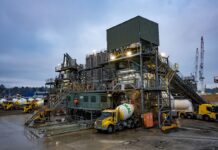
A team of engineers in Australia has developed a technique to make concrete 30 per cent stronger using waste coffee grounds, turning them into biochar through a low-energy process that involves heating organic waste in the absence of oxygen.
Dr Rajeev Roychand from RMIT University led the study published in the Journal of Cleaner Production, which is the first to prove that waste coffee grounds can be used to improve concrete.
Over 75 million kilograms of ground coffee waste is generated in Australia each year, most of which goes to landfills. Meanwhile, 10 billion kilograms of spent coffee is produced globally.
“The inspiration for our work was to find an innovative way of using the large amounts of coffee waste in construction projects rather than going to landfills – to give coffee a ‘double shot’ at life,” said Roychand, a postdoctoral research fellow at RMIT.
Dr Shannon Kilmartin-Lynch, a joint lead author in the study and a Vice-Chancellor’s Indigenous Postdoctoral Research Fellow at RMIT, said construction industries across the globe could play a role in transforming organic waste into a valuable resource.
“Inspiration for my research, from an Indigenous perspective, involves Caring for Country, ensuring there’s a sustainable life cycle for all materials and avoiding things going into landfill to minimise the impact on the environment,” said Kilmartin-Lynch.
“The concrete industry has the potential to contribute significantly to increasing the recycling of organic waste such as used coffee.”
Professor Jie Li, a corresponding author and research team leader for the study, said the coffee biochar can replace a portion of sand that was used to make concrete.
“The ongoing extraction of natural sand around the world – typically taken from river beds and banks – to meet the rapidly growing demands of the construction industry has a big impact on the environment,” Li said.
The research team is planning to develop practical implementation strategies and work towards field trials, with plans to collaborate with various industries to further develop the research.



















